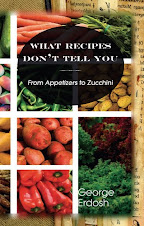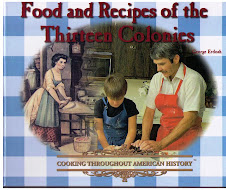Cilantro

Monday, August 19, 2013
LET'S HAVE A GOOD STEAK!
Not counting vegetarians, I haven’t met many people
who don’t love a good steak. Because of this love affair, many steak-sized not
too tender meats in the supermarket meat section are labeled “steaks,” such as
beef chuck steak, chuck tender steak, round steak and chuck eye steak. Even
some pork chops are deliberately mislabeled as “steak.”
I love a good steak like any meat lover yet I gave
up on cooking it. Why? I cannot match the flavor and tenderness of the meat
served in a good steak-house. My steaks are not fork-tender and just mediocre
in flavor.
For a good steak the grade of the meat is of prime
importance. The USDA started grading beef in 1927 and ever since every piece of
beef is graded according to their system.
The highest grade steak, Prime, is well marbled
throughout. The next grade is Choice with less marbling and that’s the highest grade
you find in most supermarkets. Select grade has even less marbling and the
lowest, Standard is a meat red all the way through without the marbling fat.
Only the edges contain fat, not enough to lubricate the meat. A tough piece of
meat. Note that some supermarkets use their own grading system though Prime and
Choice are standard for all.
So for a good home-grilled steak, go for Prime.
But you won’t find this grade in just any meat counter. Prime grade is
expensive and often reserved by high-end butchers, exclusive clubs and
restaurants for customers and clients who have generous expense accounts or
far-reaching credit cards.
Yet we all had affordable steaks in steak-houses.
How do they do it? By meticulous tenderizing lower-grade Choice meat. They do
this by either chemical tenderizers (and these are all blends of natural
products such as papaya, fig and pineapple) or by passing the meat through
mechanical tenderizers which are like medieval torture instruments with many
sharp needles that break up the tough meat fibers.
But grade is not the only thing you need to
consider. A good steak needs to be aged too. Raw, unaged beef has a metallic
taste and is rather tough, chewy; aging improves both flavor and tenderness. It
chemically alters flavor and softens tough connective tissues. During the aging
process the meat shrinks and loses some 12 to 15 percent moisture. The process adds
to the price as the meat must rest in a temperature-humidity controlled room
for about 15 days, for real high quality meat up to six weeks. Plus you pay for
the shrinkage too.
Most shoppers are very conscious of the price of
the meat package, and meat processors need to consider how much extra they can
charge for the aging before they lose buyers.
When I want a good steak, I choose a steak house.
Subscribe to:
Posts (Atom)



 Stumble It!
Stumble It!










